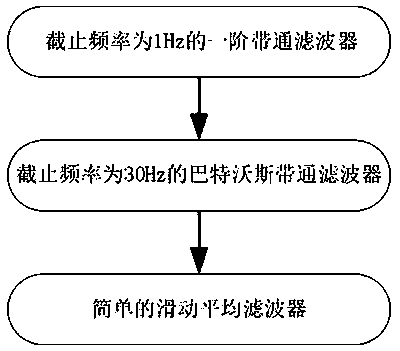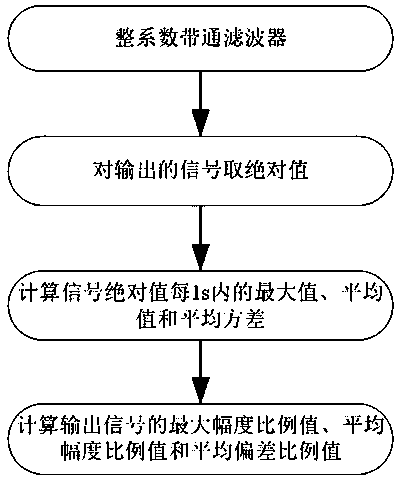Automatic shockable rhythm identification and classification method combined with electrocardio time-frequency domain feature analysis
A feature analysis and automatic identification technology, applied in the field of medical electronics, can solve the problems of low identification sensitivity, low identification sensitivity and specificity, lack of consideration of both identification sensitivity and specificity, and achieves the goal of improving sensitivity and simplifying computational complexity. Effect
- Summary
- Abstract
- Description
- Claims
- Application Information
AI Technical Summary
Problems solved by technology
Method used
Image
Examples
Embodiment Construction
[0039] This embodiment is a possible implementation on personal computer (PC) and Matlab software platforms, such as Figures 1 to 6 The specific implementation steps are as follows:
[0040] 1. Preprocess the collected ECG signals:
[0041] (1) Use a high-pass filter with a cutoff frequency of 1 Hz to suppress baseline drift;
[0042] (2) Use a Butterworth low-pass filter with a cutoff frequency of 30Hz to filter out power frequency interference and EMG noise;
[0043] (3) Use a simple moving average filter to further filter out irrelevant high-frequency interference and improve the filtering effect.
[0044] 2. Identify the cardiac arrest rhythm on the ECG signal: if the condition is satisfied: Max(AbsFS)=150μV, it is determined that the The rhythm is not a cardiac arrest rhythm, continue with the next steps.
[0045] 3. According to the frequency domain characteristics of the ECG signal, calculate the maximum amplitude proportional value, the average amplitude proportio...
PUM
 Login to View More
Login to View More Abstract
Description
Claims
Application Information
 Login to View More
Login to View More - R&D
- Intellectual Property
- Life Sciences
- Materials
- Tech Scout
- Unparalleled Data Quality
- Higher Quality Content
- 60% Fewer Hallucinations
Browse by: Latest US Patents, China's latest patents, Technical Efficacy Thesaurus, Application Domain, Technology Topic, Popular Technical Reports.
© 2025 PatSnap. All rights reserved.Legal|Privacy policy|Modern Slavery Act Transparency Statement|Sitemap|About US| Contact US: help@patsnap.com



